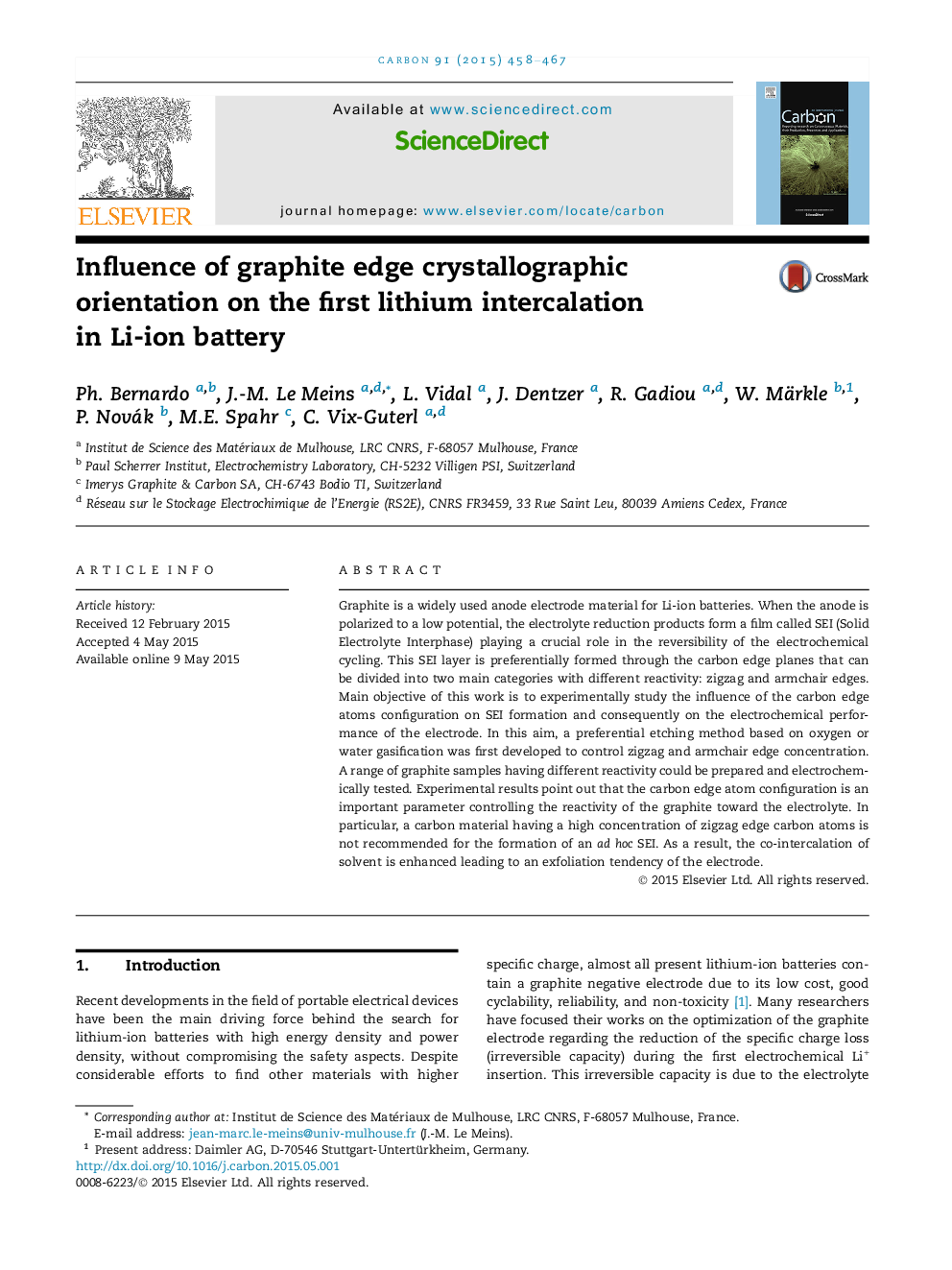| Article ID | Journal | Published Year | Pages | File Type |
|---|---|---|---|---|
| 7851785 | Carbon | 2015 | 10 Pages |
Abstract
Graphite is a widely used anode electrode material for Li-ion batteries. When the anode is polarized to a low potential, the electrolyte reduction products form a film called SEI (Solid Electrolyte Interphase) playing a crucial role in the reversibility of the electrochemical cycling. This SEI layer is preferentially formed through the carbon edge planes that can be divided into two main categories with different reactivity: zigzag and armchair edges. Main objective of this work is to experimentally study the influence of the carbon edge atoms configuration on SEI formation and consequently on the electrochemical performance of the electrode. In this aim, a preferential etching method based on oxygen or water gasification was first developed to control zigzag and armchair edge concentration. A range of graphite samples having different reactivity could be prepared and electrochemically tested. Experimental results point out that the carbon edge atom configuration is an important parameter controlling the reactivity of the graphite toward the electrolyte. In particular, a carbon material having a high concentration of zigzag edge carbon atoms is not recommended for the formation of an ad hoc SEI. As a result, the co-intercalation of solvent is enhanced leading to an exfoliation tendency of the electrode.
Related Topics
Physical Sciences and Engineering
Energy
Energy (General)
Authors
Ph. Bernardo, J.-M. Le Meins, L. Vidal, J. Dentzer, R. Gadiou, W. Märkle, P. Novák, M.E. Spahr, C. Vix-Guterl,
